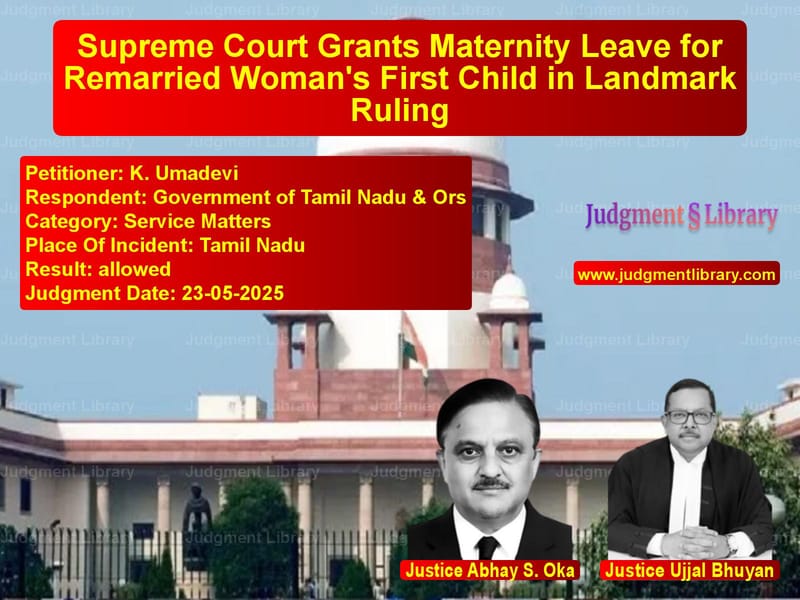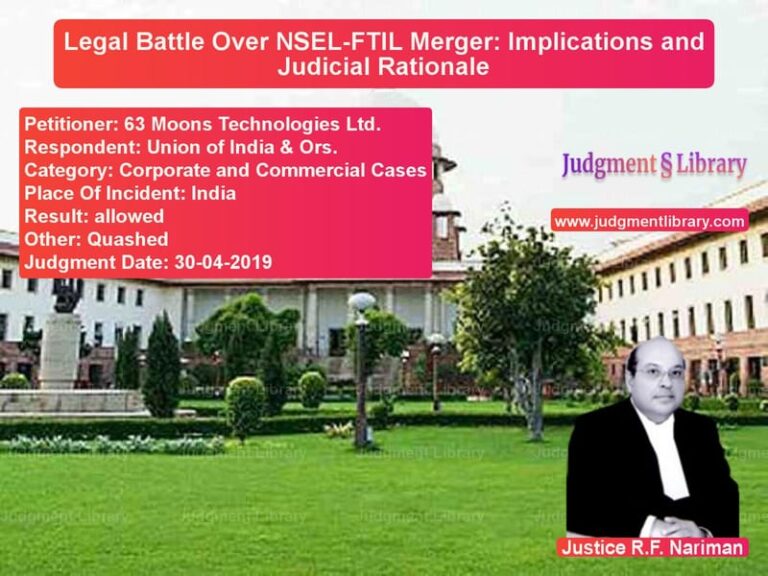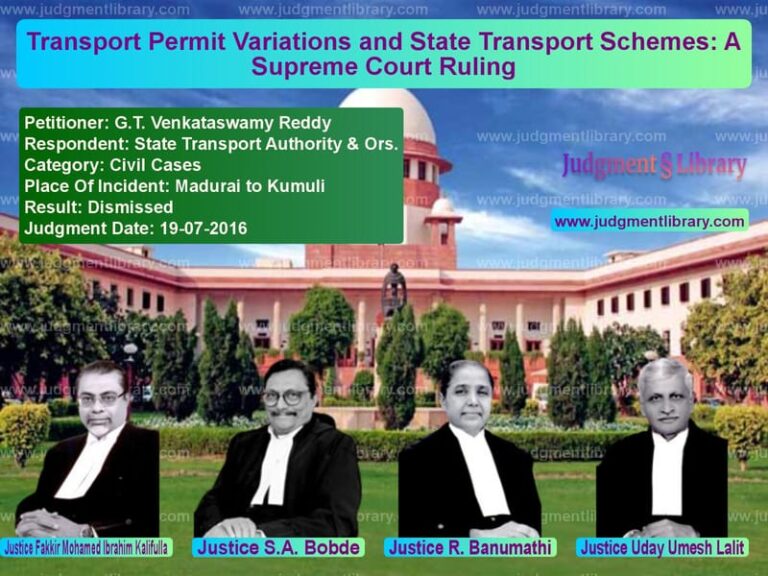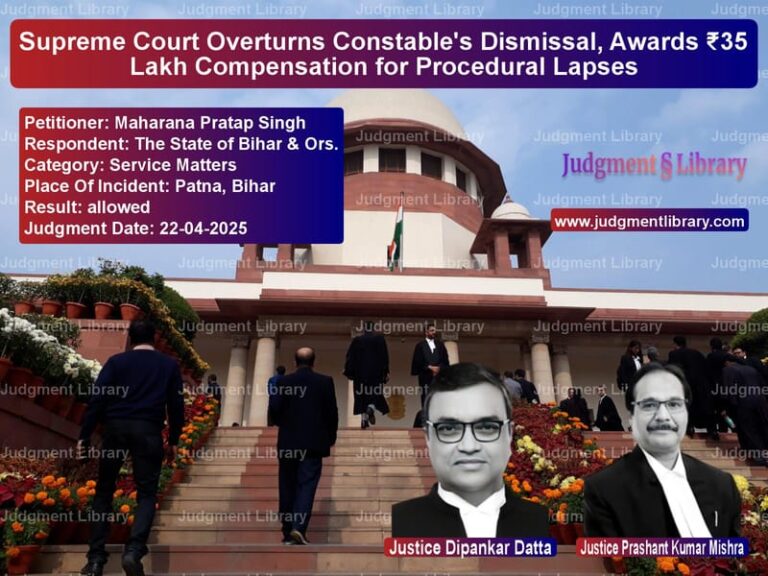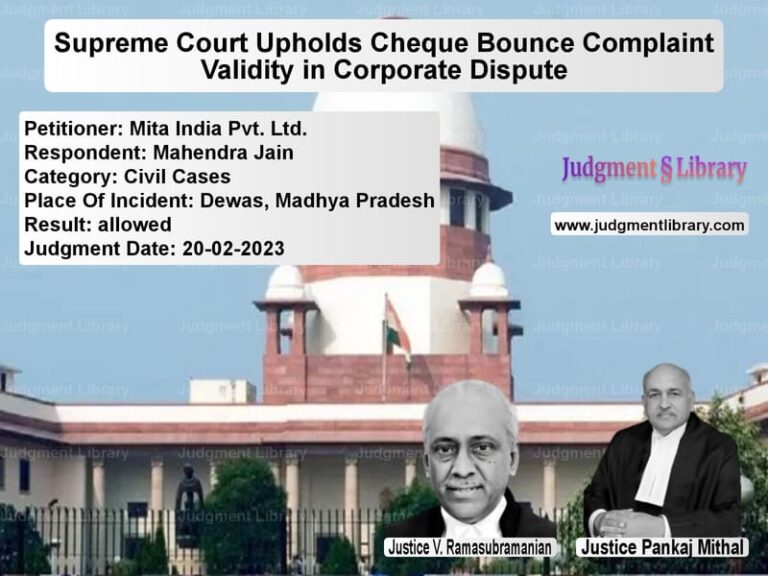Supreme Court Grants Maternity Leave for Remarried Woman’s First Child in Landmark Ruling
In a landmark judgment that redefines maternity rights for working women in India, the Supreme Court has delivered a powerful verdict protecting the reproductive rights of women who remarry. The case involved K. Umadevi, an English teacher from Tamil Nadu who found herself at the center of a legal battle that would test the boundaries of maternity benefits in government service.
K. Umadevi’s journey through the legal system began when she applied for maternity leave for her pregnancy from her second marriage. She had two children from her first marriage, which ended in divorce in 2017. When she remarried in 2018 and became pregnant, she naturally expected to receive maternity benefits like any other expecting mother. However, the Tamil Nadu government rejected her application, citing Fundamental Rule 101(a) which restricts maternity leave to women government servants with “less than two surviving children.”
The government’s order dated August 28, 2021, stated clearly: “Since as per Rule 101 (a) of the Tamil Nadu Fundamental Rules, maternity leave can be granted to a woman government servant with less than two living children only, the request of the individual to sanction maternity leave to her third child may be rejected by informing that there is no provision in the Tamil Nadu Fundamental rules for grant of maternity leave for third child through remarriage.”
This rejection set in motion a legal battle that would eventually reach the highest court of the land, raising fundamental questions about reproductive rights, gender equality, and the interpretation of maternity benefits in modern Indian society.
The Legal Battle Through the Courts
Umadevi first approached the Madras High Court, where a learned Single Judge ruled in her favor. The judge held that “two surviving children must mean children in lawful custody of the mother” and since Umadevi’s children from her first marriage were in their father’s custody, she should be entitled to maternity leave. The court directed the government to sanction her maternity leave as per the latest government order.
However, the Tamil Nadu government appealed this decision to a Division Bench of the same High Court, which reversed the Single Judge’s ruling. The Division Bench held that “grant of maternity leave is not a fundamental right” and that the state’s policy restricting maternity benefits to two children was valid. The court observed that the Supreme Court’s decision in Deepika Singh vs Central Administrative Tribunal actually supported the state’s case rather than Umadevi’s.
This conflicting interpretation led Umadevi to approach the Supreme Court, setting the stage for a definitive ruling on this crucial issue affecting thousands of working women across the country.
Arguments Before the Supreme Court
Umadevi’s counsel made compelling arguments before the Supreme Court. He contended that “the Division Bench was not at all justified in reversing the decision of the learned Single Judge” and that “the issue raised in this case is squarely covered by the decision of this Court in Deepika Singh Vs. Central Administrative Tribunal.”
He further argued that “Right to have maternity leave is a facet of reproductive right of a woman which is traceable to Article 21 of the Constitution of India” and that although the Maternity Benefit Act, 1961 might not directly apply to state government employees, “for the purpose of adopting an approach which would further the legislative intent, certainly guidance can be derived from the provisions of the Maternity Benefit Act.”
The Tamil Nadu government, represented by its counsel, defended its position vigorously. The state argued that “the entire object of maternity benefit is to protect the dignity of motherhood by providing complete care to a woman employee and her children when she is unable to perform her duty on account of her pregnancy.” However, they maintained that this policy “is subject to fiscal responsibility and human resources management.”
The government expressed concern that “any deviation from the established policy of not extending the benefit of maternity leave to women employees having more than two children would create precedents that could potentially overwhelm the exchequer and impact administrative efficacy.” They also highlighted that “it is the policy of the State to espouse the cause of small family which is in sync with the policy of Government of India on population control” and that granting Umadevi’s request “would amount to incentivizing breach of population control norms.”
The Supreme Court’s Groundbreaking Analysis
The Supreme Court, in its detailed judgment, embarked on a comprehensive examination of the constitutional, statutory, and international framework protecting maternity rights. The bench comprising Justices Abhay S. Oka and Ujjal Bhuyan delivered a judgment that would significantly advance women’s rights in the workplace.
The court began by examining Article 21 of the Constitution, noting that “Article 21 of the Constitution of India though at first blush appears to be a colourless article, it is a potent provision pregnant with wide width and scope having received extensive and liberal construction at the hands of this Court.” The judges emphasized that “life under Article 21 means life in its fullest sense; all that which makes life more meaningful, worth living like a human being.”
The court also highlighted Article 42 of the Constitution, which mandates that “the State shall make provision for securing just and humane conditions of work and for maternity relief.” This directive principle of state policy, the court noted, places a constitutional obligation on the state to protect maternity rights.
In a significant part of the judgment, the Supreme Court extensively referenced international conventions and treaties that India has ratified. The court examined the Universal Declaration of Human Rights, particularly Article 25(2) which states that “Motherhood and childhood are entitled to special care and assistance.”
The judgment also referenced the International Covenant on Economic, Social and Cultural Rights, which “recognizes that special protection should be accorded to mothers for a reasonable period before and after childbirth.” Most importantly, the court discussed the Convention on the Elimination of All Forms of Discrimination Against Women (CEDAW), which India ratified in 1993.
The court particularly emphasized Article 16(1)(e) of CEDAW, which affirms “the same rights to decide freely and responsibly on the number and spacing of their children and to have access to the information, education and means to enable them to exercise these rights.”
The Supreme Court made this powerful observation about reproductive rights: “There is no doubt that a woman’s right to make reproductive choices is also a dimension of ‘personal liberty’ as understood under Article 21 of the Constitution of India. It is important to recognise that reproductive choices can be exercised to procreate as well as to abstain from procreating. The crucial consideration is that a woman’s right to privacy, dignity and bodily integrity should be respected.”
Elaborating further, the court stated: “The ambit of reproductive rights is not restricted to the right of women to have or not have children. It also includes the constellation of freedoms and entitlements that enable a woman to decide freely on all matters relating to her sexual and reproductive health. Reproductive rights include the right to access education and information about contraception and sexual health, the right to decide whether and what type of contraceptives to use, the right to choose whether and when to have children, the right to choose the number of children, the right to access safe and legal abortions, and the right to reproductive healthcare.”
The Deepika Singh Precedent
A crucial aspect of the Supreme Court’s reasoning was its reliance on the Deepika Singh case, which presented a similar situation. In that case, the appellant had married a widower who had two children from his first marriage. When she had her first biological child, her request for maternity leave was rejected on the ground that she already had two surviving children.
The Supreme Court in Deepika Singh had declared: “The fact that the appellant’s spouse had two biological children from his first marriage would not impinge upon the entitlement of the appellant to avail maternity leave for her sole biological child.”
In the present case, the Supreme Court found this precedent directly applicable. The court noted that “insofar the present case is concerned it is true that appellant has two biological children out of her first wedlock. But that was before entry into her service. Post entry into service and from her subsisting marriage, this is her first child. It has come on record that the two children out of her first wedlock are not residing with her but with their father, who is having their custody.”
The court harmonized the state’s population control objectives with maternity rights, observing that “the object of having two child norm as part of the measures to control population growth in the country and the object of providing maternity benefit to women employees including maternity leave in circumstances such as in the present case are not mutually exclusive. The two must be harmonized in a purposive and rationale manner to achieve the social objective.”
The Final Verdict and Its Implications
In its concluding remarks, the Supreme Court declared: “We accordingly set aside the judgment and order of the Division Bench of the High Court dated 14.09.2022 and declare that appellant shall be granted maternity leave under FR 101(a). Maternity benefits which are admissible to the appellant shall be released to her within a period of two months from today.”
This judgment represents a significant victory for women’s rights in India, particularly for those who remarry and wish to start new families. The court’s recognition of maternity leave as part of reproductive rights protected under Article 21 of the Constitution sets an important precedent for future cases.
The Supreme Court’s approach in this case demonstrates a progressive interpretation of laws, where the judges looked beyond the literal text of the rules to understand their purpose and intent. By referencing international conventions and constitutional principles, the court emphasized that maternity benefits are not merely administrative privileges but fundamental rights essential for gender equality and women’s dignity in the workplace.
This judgment will likely have far-reaching implications, potentially affecting similar cases across the country and prompting state governments to review their maternity benefit policies to ensure they align with this progressive interpretation of women’s reproductive rights. For K. Umadevi and countless women like her, this verdict represents not just personal victory but a landmark step forward in the ongoing struggle for gender equality and reproductive justice in India.
Petitioner Name: K. Umadevi.Respondent Name: Government of Tamil Nadu & Ors.Judgment By: Justice Abhay S. Oka, Justice Ujjal Bhuyan.Place Of Incident: Tamil Nadu.Judgment Date: 23-05-2025.Result: allowed.
Don’t miss out on the full details! Download the complete judgment in PDF format below and gain valuable insights instantly!
Download Judgment: k.-umadevi-vs-government-of-tamil-supreme-court-of-india-judgment-dated-23-05-2025.pdf
Directly Download Judgment: Directly download this Judgment
See all petitions in Employment Disputes
See all petitions in Public Sector Employees
See all petitions in Judgment by Abhay S. Oka
See all petitions in Judgment by Ujjal Bhuyan
See all petitions in allowed
See all petitions in supreme court of India judgments May 2025
See all petitions in 2025 judgments
See all posts in Service Matters Category
See all allowed petitions in Service Matters Category
See all Dismissed petitions in Service Matters Category
See all partially allowed petitions in Service Matters Category

